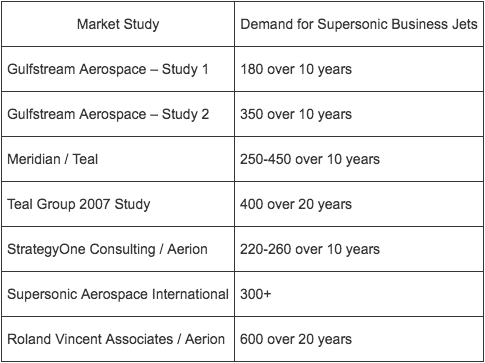Imagine flying from New York City to Los Angeles in two hours, and for the price of a normal business class ticket. It should be possible with today’s technology, and yet a 1973 ban on civil supersonic flight overland has prevented it from becoming a reality.
To understand the importance of the overland market to supersonic transport we have to take a step back and relearn some lessons from history. The conventional wisdom, ever since the Concorde’s retirement in 2003, has been that supersonic transport simply isn’t commercially viable. After all, the Concorde sustained enormous losses over its 27 years in service, and required constant injections of subsidies by the French and British governments just to break even.
And yet the particular failings of the Concorde are well understood—and have nothing to do with the viability of supersonic more generally. With a max takeoff weight of over 400,000 lbs, the Concorde was a fuel hog that required the wasteful use of afterburners to get up to its Mach 2 cruising speed. Only 14 ever made it into service, and its design was never iterated on to incorporate new technology.
Who could be surprised? The Concorde was designed by government committees, with little to no attention paid to what we would today call “product-market fit.” Its 100 person capacity was chosen due to laudable, but arbitrary, democratic aspirations, and with such a high ticket price (up to $20,000 in today’s dollars) it struggled to fill half the cabin on many routes. Coming to market amid the 1973 oil crisis certainly certainly didn’t help, either.
The U.S. had its own government-led supersonic project, the Boeing 2707. Not to be outdone by Europe or the Soviets, President Kennedy pushed for an even bigger and faster plane: Mach 3 instead of Mach 2, and 300 passengers instead of 100. But after pouring billions of dollars into research and development, the program went bust in the early 1970s, a couple years before the FAA banned supersonic flight overland and just after the Concorde’s milestone first flight.
Climbing the Learning Curve
These episodes from history do more to indict government boondoggles—”Boomdoggles” as they’re known in the aviation community—than supersonic transport, per se. They reveal the fatal conceit of trying to design a new product from scratch with little to no market feedback.

The aircraft industry is notorious for having steep industry learning-curves—indeed, it’s where the economic theory of learning curves originates. It’s also why allowing supersonic overland is so important to its long-run success and affordability.
As my co-author Eli Dourado and I detail in our paper Make America Boom Again and on the website SupersonicMyths.com, there have been at least seven in-depth market analyses indicating a large demand for supersonic business jets—as many as 450 units over 10 years. Business and regional jets are the natural entry point for supersonic on the industry learning-curve. A smaller supersonic business jet doing more frequent trips is better suited to meeting early consumer demand without being as vulnerable to losses. Only after learning which routes are most popular would passenger capacities increase, working up to full size passenger jets that would bring truly democratized supersonic transport to the masses.
Early technological adoption among a luxury or business class of consumers is a recurrent phenomenon in the spread of innovation. As Everett M. Rogers showed in his seminal work, Diffusion of Innovations, early adopters are often willing to pay a high initial price for a new product due to greater resources and the pursuit of social status. From there, firms reinvest profits in product design and use the benefits of volume and scale to introduce subsequent product versions with more and more mass market appeal. This is how cell phones went from being a luxury used by Wall Street’s Gordon Gecko to being in the pockets of poor farmers in Africa. It’s also the strategy Tesla Motors is using to mainstream affordable electric vehicles.
But there’s a catch. According to an analysis by Gulfstream, ending the prohibition on supersonic overland is “required” for the success of supersonic business jets given that only 25% of small aircraft operations occur over water. The 2001 National Research Council committee on Commercial Supersonic Technology agrees, stating that “supersonic flight over land is essential for [business jets].”
It makes sense. Roughly half of all passenger flights in the world occur over the continental United States. Banning supersonic overland thus imposes a severe cap on supersonic transport’s potential market size.
Progress is in the Air
But what about noise? Wouldn’t a fleet of supersonic aircraft overland create intolerable sonic booms that would rattle windows and scare livestock?
This would plausibly be a problem for the Concorde, but that was 1960s technology. Today, thanks to modern aircraft engines, lightweight carbon fiber materials, and powerful computer simulation techniques, aircraft designers have created a whole new class of “low-boom” supersonic aircraft designs. A lower mass and optimized shape can make the boom from supersonic jets sound less like an explosion in the sky, and more like a quick thump.
That’s why we have called upon the FAA to replace its ban with a simple noise standard, one consistent with noises we already find reasonable in daily life. The Concorde’s sonic boom was 110 decibels, while today NASA is planning to demonstrate a supersonic jet with a boom below 80 decibels. Because decibels are logarithmic, that represents a 1000x reduction in loudness. Think car door slamming, or a truck passing by, but over in half a second. It’s time for the private sector to be let in on the game.
It will be up to the FAA to decide exactly what noise standard makes sense. But the longer it delays the deeper we set into complacency with the current state of aviation innovation—an area which, in terms of speed, has been stagnant or regressing for over forty years.
